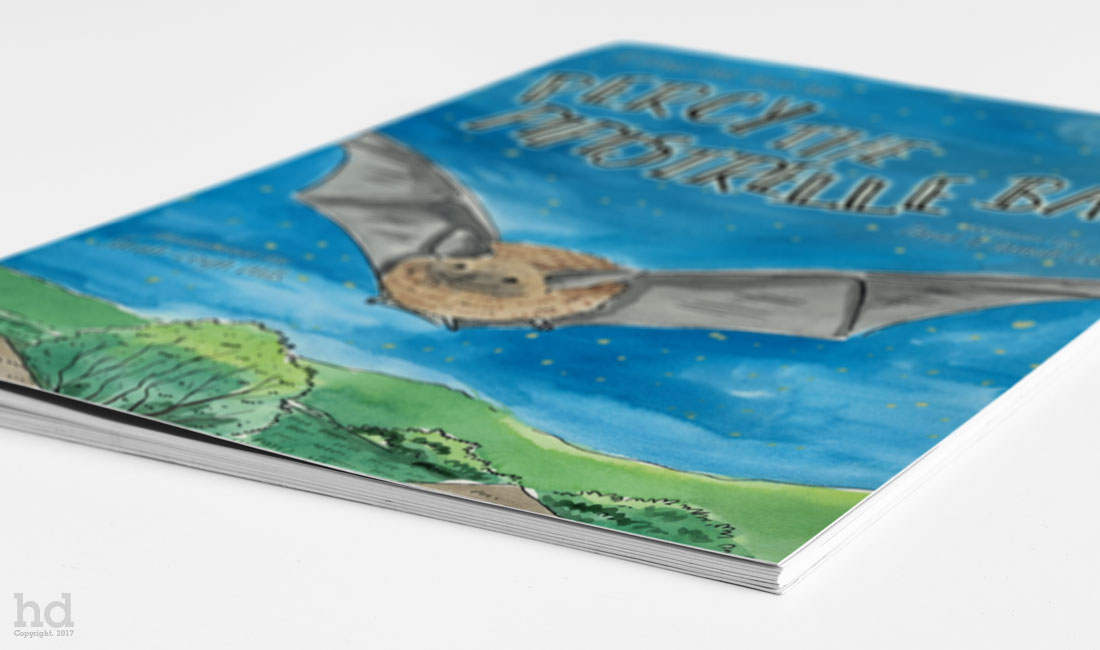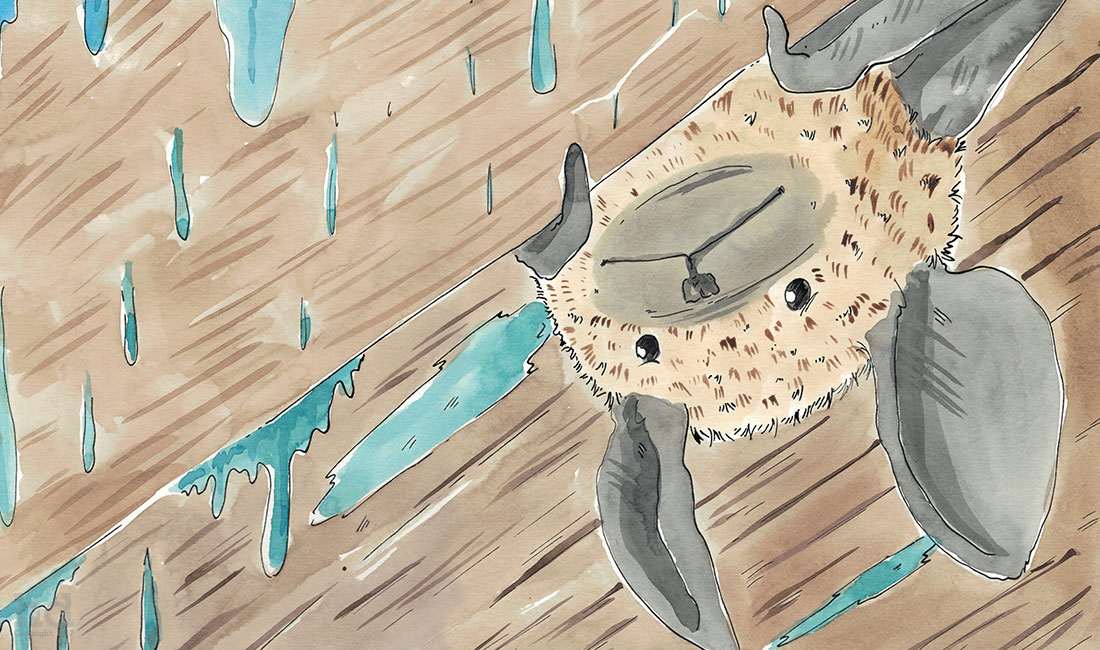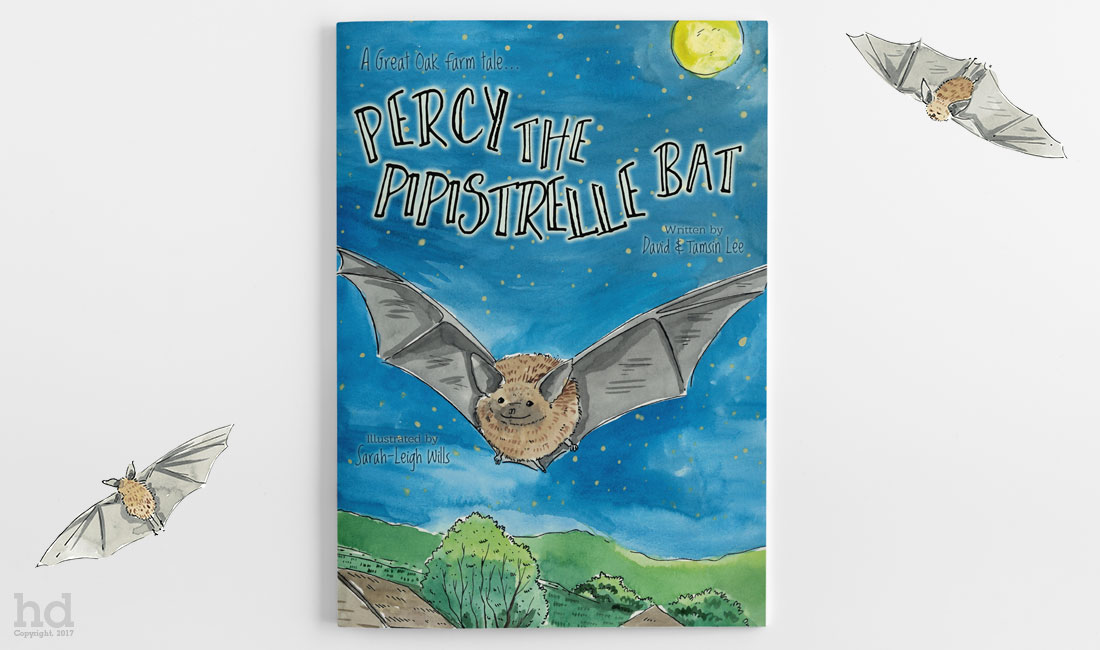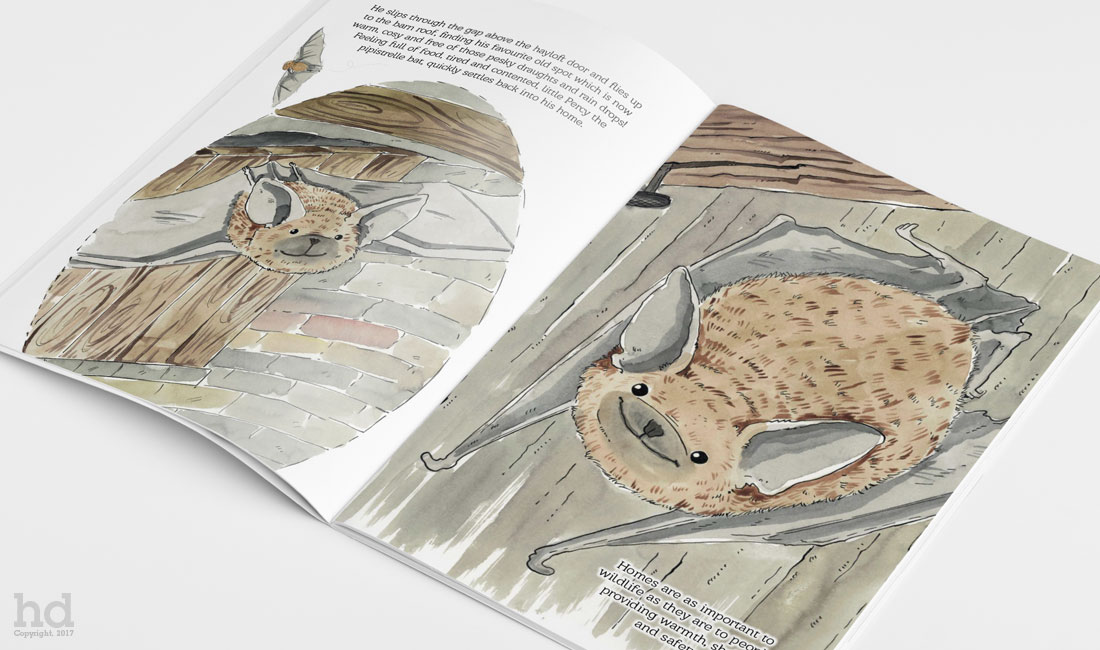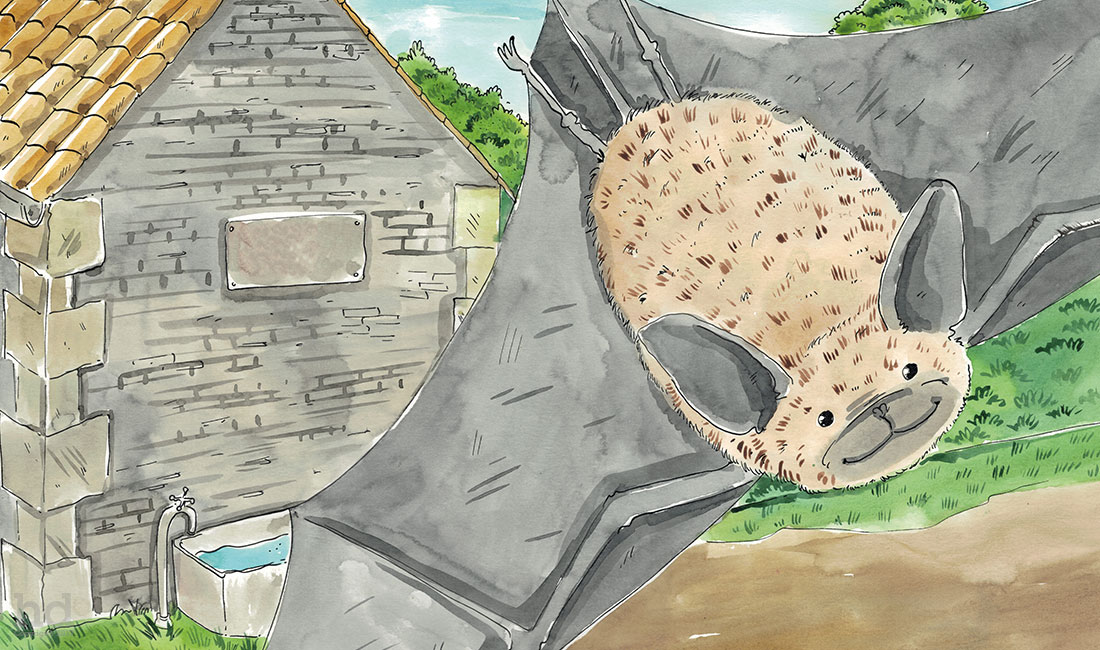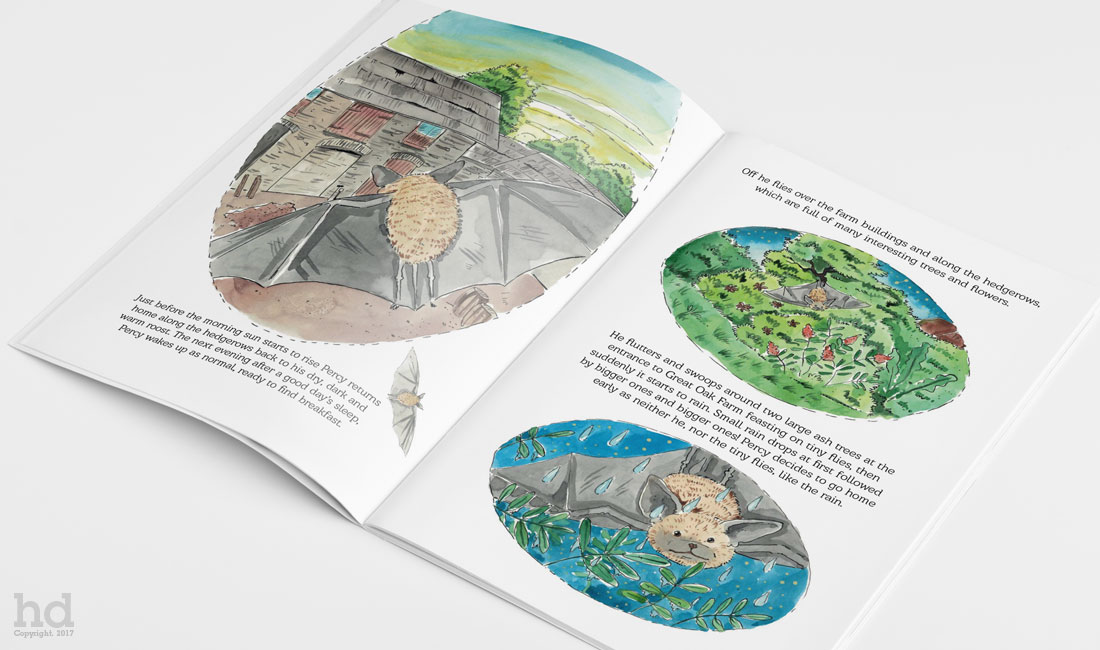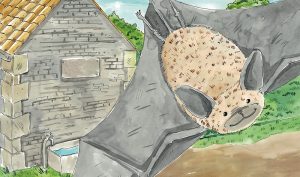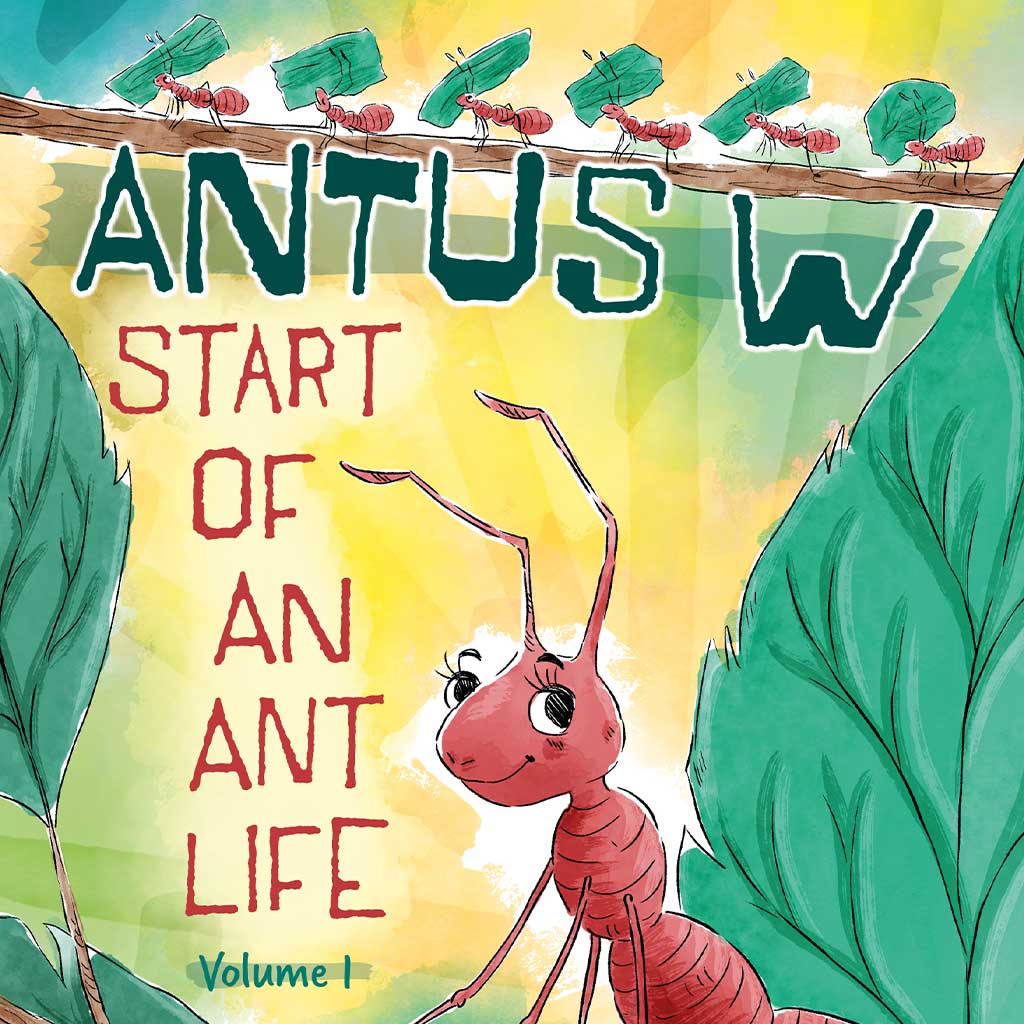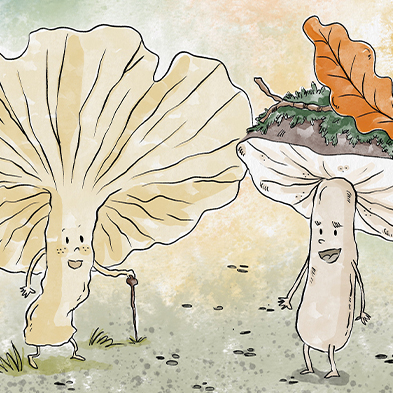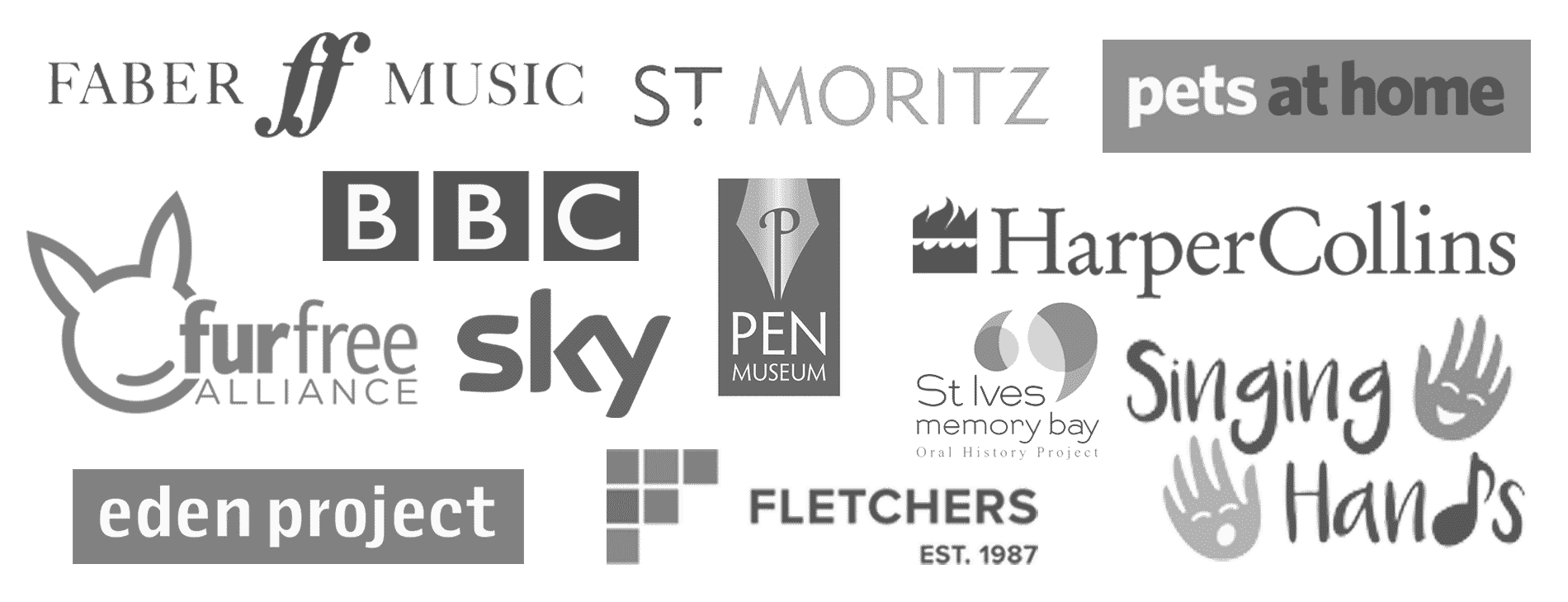Percy the Pipistrelle Bat
Children’s book illustrations/design
Written by Tamsin & David Lee.
COMING SOON
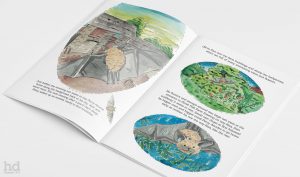
Percy is a common bat, usually found hanging out (sorry, sorry couldn’t help it!) in places like old buildings, trees, bridges, tunnels and caves. You may not see them out and about too often, but they are there! If you sit in your garden on a warm summer’s evening and watch the skies around dusk you will see your own Percy, swooping and flying on his specially-formed wings. These wings actually have little hands adapted for flying, which makes bats the only mammals who fly rather than glide! So if you see them flapping as they forage in your garden for insects and bugs make sure you wave!
The Authors
Come along for the flight with Percy, created by the very knowledgable Tamsin and David Lee. Tamsin and David work very closely with wildlife, and specifically bats. David and Tamsin are enthusiastic about educating the younger generation on the importance of protecting the wildlife around us and why this will benefit the environment now and in the future. Adults will also find these books engaging giving them a good foundation knowledge of each species.
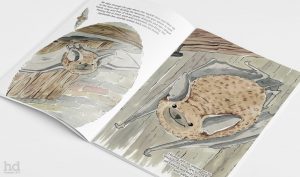
Great Oak Farm
“Great Oak Farm is a series of children’s books based in a fictional landscape. The series focusses on some of the species that currently receive legislative protection, and includes those which are not as well publicised in children’s literature. With the inevitable increase in development and the possible relaxation of wildlife legislation post-Brexit we feel that these books come at an opportune moment to educate young and old alike about the threats our native wildlife face and their importance in the ecosystem. Children will learn through the course of each story whilst parents will pick up valuable knowledge and facts as they, in turn, read the story to their child. The books are highly pictorial with engaging characters that are not overly anthropomorphised. They also include a section of interesting facts at the end to enhance the knowledge of the reader. We initially intend the series to comprise of four main species; this list is by no means exhaustive (unfortunately for wildlife) and each species has numerous issues to overcome. There is therefore scope to create a range of stories for each species. For example, in this first book we deal with the re-roofing of old buildings but bats can also be at risk from barn conversions, building demolition, wind turbines etc. There are also issues (for numerous species) with regard to loss of habitat and habitat fragmentation, through the loss of wildlife corridors, all of which can be explained in an educational but interesting manner through a number of books. We want to reinforce the problems that our native species face – many of these issue affect more than one species at a time.”
Tamsin and David Lee
Percy
So, young Percy goes a-swooping and a-flapping through the night sky, and if you look closely enough you will spot him, or maybe one of his friends. Maybe you can identify different kinds of bats, like Percy does in the book. You are most likely to find a Percy, as Common Pipistrelles, like Percy, are the most common and widespread of the British bats. These are the bats you are most likely to see as they often roost in buildings and emerge early at dusk. There are two other species of pipistrelle bat in the UK, these are the soprano pipistrelle (also common) and the Nathusius’ pipistrelle (not common). So keep an eye out for Percy and any of his friends that may be swooping about!

